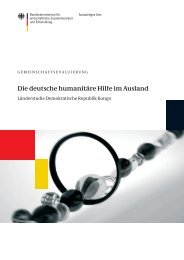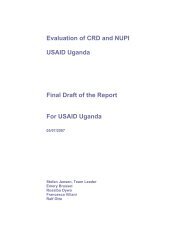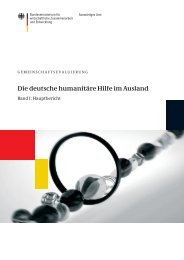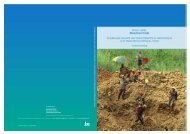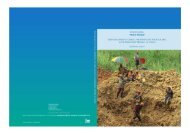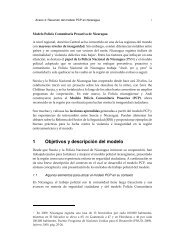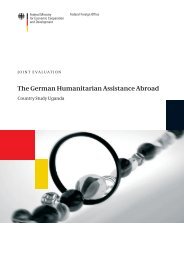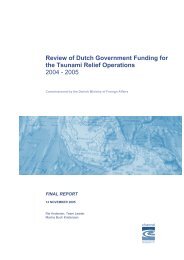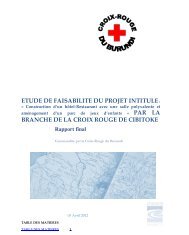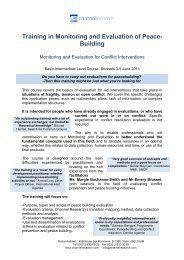A ripple in development? - Channel Research
A ripple in development? - Channel Research
A ripple in development? - Channel Research
You also want an ePaper? Increase the reach of your titles
YUMPU automatically turns print PDFs into web optimized ePapers that Google loves.
43. Conflict sensitivity analysis should be part of all <strong>in</strong>ternational organisation<br />
and NGO programm<strong>in</strong>g, based on an explicit analysis or mapp<strong>in</strong>g<br />
of the immediate conflict environment, and their relation with programme<br />
delivery.<br />
Strengthen local level state effectiveness<br />
44. NGOs should cont<strong>in</strong>ue to ref<strong>in</strong>e participatory approaches, <strong>in</strong>clud<strong>in</strong>g<br />
public consultation and grievance mechanisms. These should lead<br />
to a programme documentation that straddles different projects and<br />
years for NGOs engag<strong>in</strong>g <strong>in</strong> reconstruction work, and should lead to<br />
clear advocacy guidel<strong>in</strong>es.<br />
45. NGOs and UN agencies should be cooperat<strong>in</strong>g with government to reestablish<br />
or clarify the legal rights of affected populations, and contribute<br />
to a dialogue for the establishment of consistent policies on<br />
land use.<br />
More <strong>in</strong>tegrated area approaches<br />
46. NGOs and UN agencies should target need that is carefully articulated<br />
<strong>in</strong> terms of market opportunities for the beneficiaries, and the probability<br />
of future <strong>in</strong>vestments.<br />
47. UN agencies should exam<strong>in</strong>e how the early recovery sector leads or<br />
cluster approaches should enable a rapid transition to an area based<br />
approach. There are such examples <strong>in</strong> the world where long term<br />
rehabilitation sectoral approaches are managed at the sub-regional<br />
level.<br />
Less restrictive risk reduction<br />
48. UN agencies, the Red Cross Movement, and NGOs should implement<br />
their DRR projects with a multi-hazard focus, even if tak<strong>in</strong>g<br />
advantage of <strong>in</strong>creased <strong>in</strong>terest <strong>in</strong> risk reduction after a major disaster.<br />
49. All agencies, <strong>in</strong> particular the Red Cross Movement, and NGOs,<br />
should attempt to design DRR projects that br<strong>in</strong>g short-term as well<br />
as long-term benefits to make participation <strong>in</strong> DRR more attractive<br />
for affected communities.<br />
Better notions of capacity build<strong>in</strong>g<br />
50. International agencies, which are affected by a high turnover of staff,<br />
should strengthen human resource mechanisms that can ensure that<br />
high quality personnel will be attracted to work <strong>in</strong> disaster reconstruction,<br />
and will be reta<strong>in</strong>ed, possibly <strong>in</strong> an <strong>in</strong>teragency context<br />
and <strong>in</strong>ternationally, over many years.<br />
121



